<< Previous | Displaying results 426-450 of 6769 for "" | Next >>
Frederik was raised in a religious Jewish home. His father was a scribe of Jewish holy texts. Frederik studied accounting and became a certified public accountant. After his father died, he helped support his three sisters, his blind brother and his mother. When he was in his mid-20's, Frederik married and started his own family. 1933-39: Creating an atmosphere of Jewish observance in the home was important to Frederik and his wife. They loved to celebrate the Sabbath and the Jewish holidays with their…
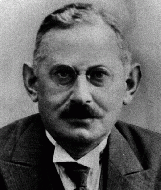
Grietje was born to a large religious Jewish family in Amsterdam. When she was in her mid-20's, she married Frederik Polak, an accountant. The Polaks had a son, Jacob, and three daughters, Julia, Betty and Liesje. They lived in simple quarters on the second floor of a house. 1933-39: Creating an atmosphere of Jewish observance in the home was important to Grietje and her husband. They loved to celebrate the Sabbath and the Jewish holidays with their four children. Grietje taught shorthand and needlepoint…
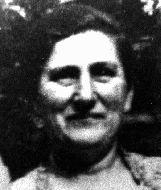
Erna was the second of four daughters. Her religious Jewish parents moved the family to Essen, Germany, in 1905 when Erna was 21. Erna married when she was in her twenties, but the couple had no children and her husband passed away. After living as a widow for some years, Erna remarried to Jacob Unger, a salesman, and together they had two children, Max and Dora. 1933-39: When Hitler became chancellor of Germany in 1933, Jacob went to Amsterdam to explore the possibility of the family settling there.…
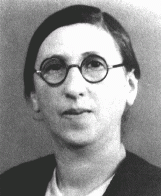
One of two children born to religious Jewish parents, Ema was raised in the small Moravian town of Lomnice, where her mother ran a general store. In 1901 Ema married Eduard Skutecky, a regular customer at her mother's store. The couple settled in the city of Brno, where they raised three children. Eduard ran a shipping company. 1933-39: By 1933 Ema's three children were grown and had moved out. Four years later her husband passed away, and Ema moved in with her eldest daughter, Elsa. Elsa and her husband…
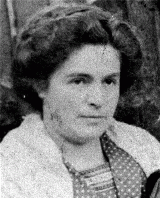
Szlamach was one of six children born to Yiddish-speaking, religious Jewish parents. Szlamach's father was a peddler, and the Radoszynski family lived in a modest apartment in Warsaw's Praga section on the east bank of the Vistula River. After completing his schooling at the age of 16, Szlamach apprenticed to become a furrier. 1933-39: During the 1930s Szlamach owned a fur business. Despite the Depression, he was hoping the economy would turn around so that he could make enough money to move into his own…
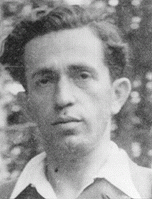
Isadore and his wife, Sossia, had seven sons. The Frenkiels, a religious Jewish family, lived in a one-room apartment in a town near Warsaw called Gabin. Like most Jewish families in Gabin, they lived in the town's center, near the synagogue. Isadore was a self-employed cap maker, selling his caps at the town's weekly market. He also fashioned caps for the police and military. 1933-39: Isadore felt the pinch of the Depression, but although business was poor, he was able to provide for his family. Shortly…
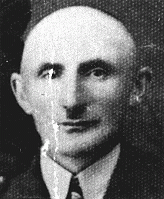
Sossia and her husband, Isadore, were the parents of seven boys. The Frenkiels, a religious Jewish family, lived in a one-room apartment in a town near Warsaw called Gabin. Like most Jewish families in Gabin, they lived near the synagogue. Sossia cared for the children while Isadore worked as a self-employed cap maker, selling his caps at the town's weekly market. 1933-39: Because of the Depression, Isadore's business had fallen off, but the Frenkiels managed to continue providing for their family.…
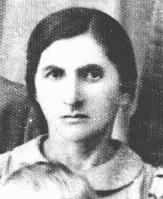
Benjamin, called "Benno" by his family and friends, grew up in a religious Jewish household in Amsterdam. Benno's father, a successful diamond manufacturer, was president of the Amsterdam Jewish community. Benno had two younger sisters and enjoyed collecting stamps. 1933-39: After he obtained some work experience in a department store, Benno joined his father in the diamond business. Benno adhered strictly to Jewish law. He loved tennis and skiing, and in 1938, while skiing in Switzerland, he met a girl…
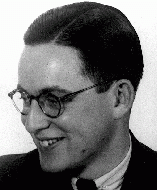
The youngest of two children, Henia was born to a Jewish family in the town of Krzepice. By the early 1930s, the Jewish population of Krzepice comprised more than 40 percent of the town's inhabitants. Henia's father made his living trading cattle in the area. Henia attended a public elementary school. 1933-39: On September 1, 1939, the Germans invaded Poland; a day later, they entered Henia's town. Her family tried to escape to Warsaw but the German forces quickly overtook them and ordered them back to…
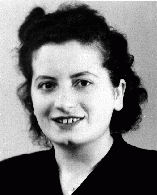
The elder of two sons of religious German-Jewish parents, Siegfried grew up in the city of Frankfurt. Upon completing his education, he became a certified public accountant in Frankfurt. In his free time he worked as a freelance music critic. While on a vacation in 1932 on the North Sea island of Norderney, he met Herta Katz, a young woman with whom he quickly fell in love. 1933-39: The Nazis had fired Siegfried from his government job because he was Jewish. Although his mother opposed the match,…
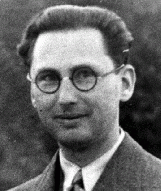
Mina, born Mina Friedman, was the youngest of four daughters born to a Jewish family in the Lithuanian town of Jonava. At the age of 18, Mina married Osser Beker, a lumber dealer. The couple settled in Jonava where Mina worked as a seamstress. The Bekers had two sons and two daughters, but their oldest son died in a childhood accident. 1933-39: Mina's son Abe attended a Jewish religious school in Jonava. But since Mina had received an extensive Jewish education, she decided to teach her daughters at home.…
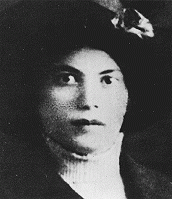
After secondary school, Franz studied painting at Duesseldorf's Academy of Fine Arts, eventually shifting to art education. He joined an avant-garde group rebelling against traditional painting. Later, he taught art to high school students. For Franz the drift towards fascism was frightening, as was the increasing antisemitism. But being only half Jewish, he did not feel worried about his personal safety. 1933-39: Hitler became chancellor of Germany on Franz's thirtieth birthday. Five months later Franz…
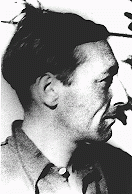
Karl was the fourth of six children born to Roman Catholic parents in the village of Wampersdorf in eastern Austria. The Stojkas belonged to a tribe of Roma ("Gypsies") called the Lowara Roma, who made their living as itinerant horse traders. They lived in a traveling family wagon, and spent winters in Austria's capital of Vienna. Karl's ancestors had lived in Austria for more than 200 years. 1933-39: Karl grew up used to freedom, travel and hard work. In March 1938 his family's wagon was parked for the…
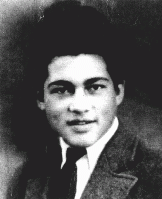
Hilda was born in a territory ruled by Germany until 1919. A teacher and a painter, she married Franz Kusserow and moved to western Germany before World War I. There, she gave birth to 11 children and became a Jehovah's Witness. After 1931 the Kusserow home in the small town of Bad Lippspringe was the headquarters of a Jehovah's Witness congregation. 1933-39: The Nazis repeatedly searched Hilda's home because her family remained openly steadfast in their devotion to Jehovah. Hilda continued doing…
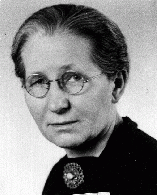
Gabrielle was the second of four children born to Dutch parents. Her father was a minister in the Seventh-Day Adventist Church. She grew up in Collonges, France, near the Swiss border, where her father served as a pastor. Gabrielle was baptized in the Seventh-Day Adventist faith at the age of 16. She attended secondary school in London, England. 1933-39: Gabrielle became increasingly active in the Seventh-Day Adventist Church, eventually becoming the secretary at the French-Belgian Union of Seventh-Day…

Preben was born to a Protestant family in the small Danish fishing village of Snekkersten. He was raised by his grandmother, who was also responsible for raising five other grandchildren. Every day Preben commuted to school in the Danish capital of Copenhagen, about 25 miles south of Snekkersten. 1933-39: There were very few Jews in Preben's elementary school, but he didn't think of them as Jews; they were just his classmates and pals. In Denmark they didn't distinguish between Jews and non-Jews, they…
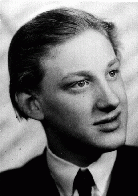
Leif was born to a Jewish family in the Danish capital of Copenhagen. Both of his parents were active in the Jewish community there, and his father owned a small garment factory. The majority of Denmark's 6,000 Jews lived in Copenhagen before the war. Despite its size, the city's Jewish population supported many Jewish organizations, often aiding Jewish refugees from all over Europe. 1933-39: Leif went to a Jewish nursery school, which was next to a girls' school in Copenhagen. He didn't like his school…
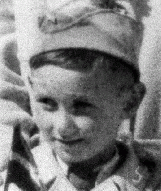
Frank's town of Trest in western Moravia had a small Jewish community of 64 members in 1930, and Frank was sometimes beaten up in grade school because of antisemitism. When the Meissners' wooden shoe factory closed, Frank's father turned to the furniture industry. But due to post-World War I economic uncertainty, he lost his livelihood. To support the family, Mrs. Meissner worked as a secretary. 1933-39: Trest was small and didn't have a secondary school, so Frank studied during the week in the…
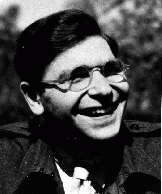
When Agnes was a teenager, she attended Budapest's prestigious Baar Madas private school, run by the Hungarian Reformed Church. Although she was the only Jewish student there, Agnes' parents believed that the superior education at the school was important for their daughter. Agnes' father, a textile importer, encouraged his daughter to think for herself. 1933-39: In 1936 Agnes studied educational techniques with Signora Maria Montessori in Italy and earned a diploma so she could teach. Hoping to improve…
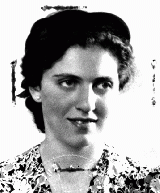
Chaim's family came from a small town where his father owned a textile store. When antisemitic pogroms broke out in Brudzew, the Engels moved to the industrial city of Lodz. Chaim was then 5 years old. In Lodz he attended a Jewish school that also provided a secular education. After finishing middle school, Chaim went to work at his uncle's textile factory. 1933-39: Chaim's neighborhood in Lodz was predominantly Jewish, so most of his friends were Jews. As a young adult he began his compulsory army…
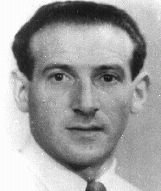
Born to a Jewish family, Willy left Poland at age 20 and emigrated to Palestine. He became active in the workers' organization to end the British mandate there. His activities led to his arrest on May 1, 1931. After serving a two-year prison sentence, Willy was expelled from Palestine. 1933-39: In 1933 Willy left Palestine for Austria, where he joined the ranks of the workers' movement. The economic depression in Austria gave momentum to the movement's cause, and Willy and his friends were closely watched…
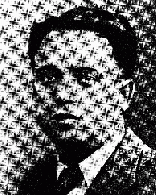
Yves' mother died when he was 7, and he grew up in the home of his grandfather, who was the chief Ashkenazi rabbi of Paris. Yves became a successful businessman, owning a chain of department stores. He was an avid mountain climber and liked to play tennis and to race cars and motorcycles. As a young man, Yves did his military service in France's alpine corps. 1933-39: In 1934 Yves married Paulette Weill, and the couple had two daughters, Nadine in 1935 and Francelyn in 1939. He was called up by the French…

Michael was born in a village in the southeastern part of Galicia, an Austrian province before it became a part of Poland in 1918. Raised by Jewish parents, Michael served as an officer in the Austro-Hungarian army until the end of World War I. After the war, Michael and his Hungarian-Jewish wife settled in Paris, where he became known as Michel. They raised three children there. 1933-39: Michael's family was better off in Paris than they had been in eastern Europe. In Paris, Michael was a successful…
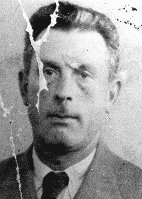
Nadine was the daughter of immigrant Jewish parents. Her Russian-born mother settled in France following the Russian Revolution of 1917. Nadine was born in Boulogne-Billancourt, a city on the outskirts of Paris known for its automobile factories. She was fluent in Russian and French. 1933-39: Nadine attended elementary school in Paris. Her mother, Ludmilla, taught piano, and her Russian grandmother, Rosalia, lived with them. After France declared war on Germany in September 1939, Nadine's mother moved the…
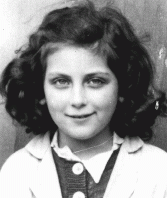
The second of four children, David, or Duvid as he was called by his family, was born to Jewish parents living 35 miles east of Warsaw in the small predominantly Jewish town of Kaluszyn. David's mother and grandmother ran a newspaper kiosk in town, and his father worked as a clerk in the town hall. David attended public elementary school. 1933-39: War has broken out between Poland and Germany. Many people are afraid of what might happen if the Germans occupy Poland and have decided to flee to the Soviet…
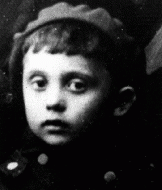
We would like to thank Crown Family Philanthropies, Abe and Ida Cooper Foundation, the Claims Conference, EVZ, and BMF for supporting the ongoing work to create content and resources for the Holocaust Encyclopedia. View the list of donor acknowledgement.